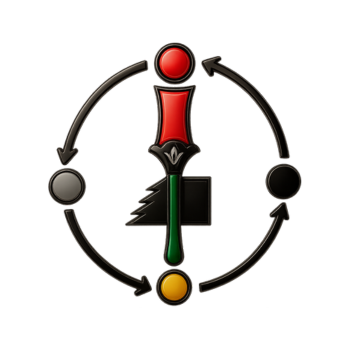-
Contrary to the propaganda through the colonial lens, the decorated body (Scarification/Cicatrisation) and the communication between the body (and face/teeth) and written texts have a very long history. Of all inscribed surfaces and viewed as “marks of civilisation”, the body may be the most politically charged template for imparting meaning. Since it moves through space, the body mediates between the public and the private spheres.
The body has been used as a primary canvas for inscriptions to address/affirm: identification, ethnicity, rank/standing with society (class), strength, religious purposes, signal permanent transition to adulthood (rites of passage/marriage and birth of children. Also used to signify beautification, healing purposes, spiritual purposes, all through inscribed forms of adornment just to name a few.
These same body marking systems are also reflected in Afrikan traditional arts including architecture, figurative sculptures, jewelry, pottery, decorated gourds and personal objects underscoring how both traditional and contemporary Afrikan art though usually created for different audiences and purposes at times employ shared aesthetic systems and a common recognition of the power of the incised body to convey meaning, memory and identity. These metaphoric body markings reinforce deeply hold cultural beliefs about what it means to be human.
4 Comments-
Deep and beautiful!
-
 120,138
Abibisika (Black Gold) Points
120,138
Abibisika (Black Gold) Points
They are also for spiritual protection. I had scarification done at my joints with a Black powder rubbed into it.
-
Grand Rising Teacher. Yes this is true, I suppose I should have stated it better than saying “Spiritual Purposes”, but Spiritual Protection is truly what I meant. As always your words speak great volumes, thank you for sharing….gratitude and guidance always.
-
 120,138
Abibisika (Black Gold) Points
120,138
Abibisika (Black Gold) Points
It’s all good. I appreciate the posts as always!
-
-
-

